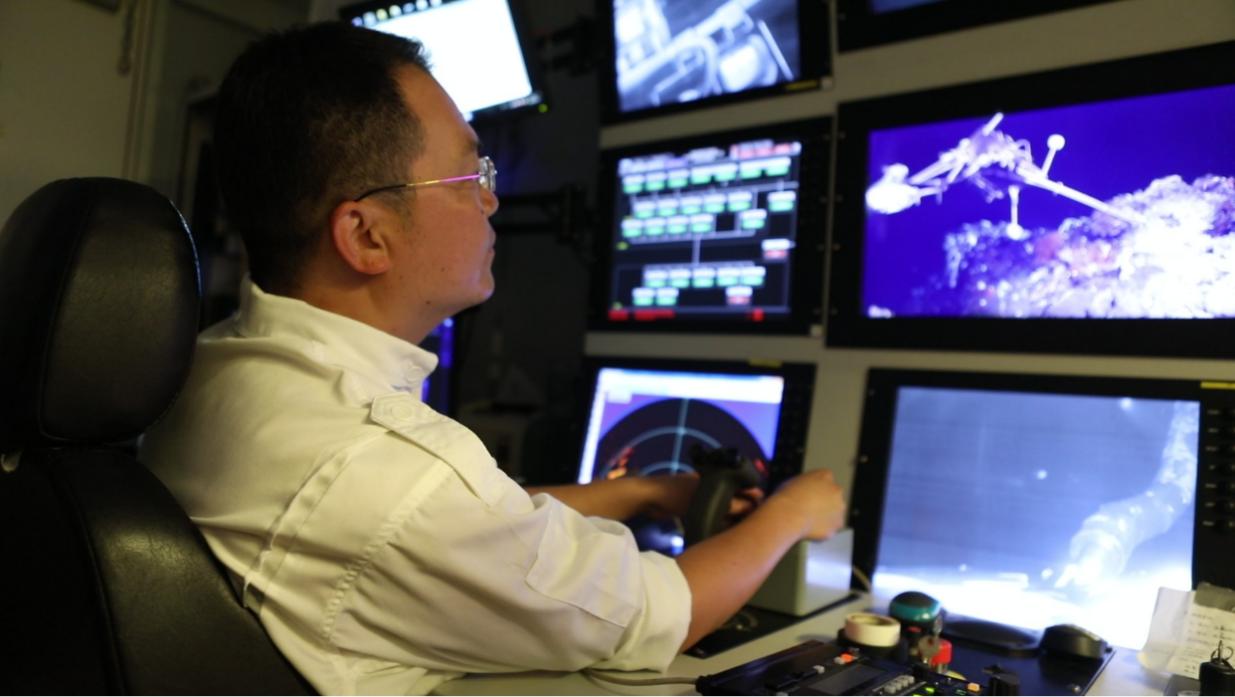(Text by ZHANG Xin, xzhang@qdio.ac.cn)

Xin was driving the ROV. Credit: Institute of Oceanology, Chinese Academy of Sciences
In this image, I am piloting the ROV (Remote Operated Vehicle) Faxian, which was taken in the summer of 2018. As the chief scientist of the hydrothermal system and cold seep investigation cruise of R/V KEXUE in 2018, I am conducting in situ Raman detection of hydrothermal vent fluid in the Okinawa Trough. By driving the ROV Faxian, we can travel freely in the deep ocean and use our self-developed deep-sea in-situ Raman spectrometer carried by ROV to directly obtain information on the composition and content of the seafloor samples. I can't remember how many times I've driven the ROV, this is the daily life of our marine research, hard but full of surprises.
I have been curious about the mysterious ocean since I was a child, and in 2009, I received a joint PhD from Ocean University of China and Monterey Bay Aquarium Research Institute in USA. In MBARI, I met Peter G· Brewer, a renowned marine chemist, and, in order to achieve precise detection of extreme environments in the deep ocean, together we improved the Deep-ocean Raman in situ spectrometer (DORISS) to enable detection of sediment pore water on the seafloor. In the detection of reductive sediments in deep sea seafloor, we have discovered that the methane content of seafloor sediments is grossly underestimated, which is likely to refresh our understanding of the ocean carbon cycle.
After my PhD, I joined the Institute of Oceanology, Chinese Academy of Sciences, where my team and I developed a new generation of deep-sea in situ Raman spectroscopy detection system, Raman insertion Probe system (RiP system), which is more powerful and can be applied to the detection of fluids, sediment pore water, hydrates, organisms and rocks in deep-sea hydrothermal vents and cold seeps system. Using the RiP system, we have discovered more deep-sea peculiar phenomena, such as the first discovery of gas hydrates on the exposed seafloor in the South China Sea, the observation of supercritical carbon dioxide emission in hydrothermal regions, and the observation of gaseous water eruptions on the seafloor.
I have always had a dream to move the laboratory to the seafloor. I believe that with the improvement of China's ocean exploration capability and the efforts of countless marine science and technology workers, more sophisticated analytical instruments used in laboratories will be applied to in situ observation of the seafloor in the future, and a real seafloor analytical laboratory will be established. My team and I will continue to work hard to achieve this goal.
(Editor: ZHANG Yiyi)

